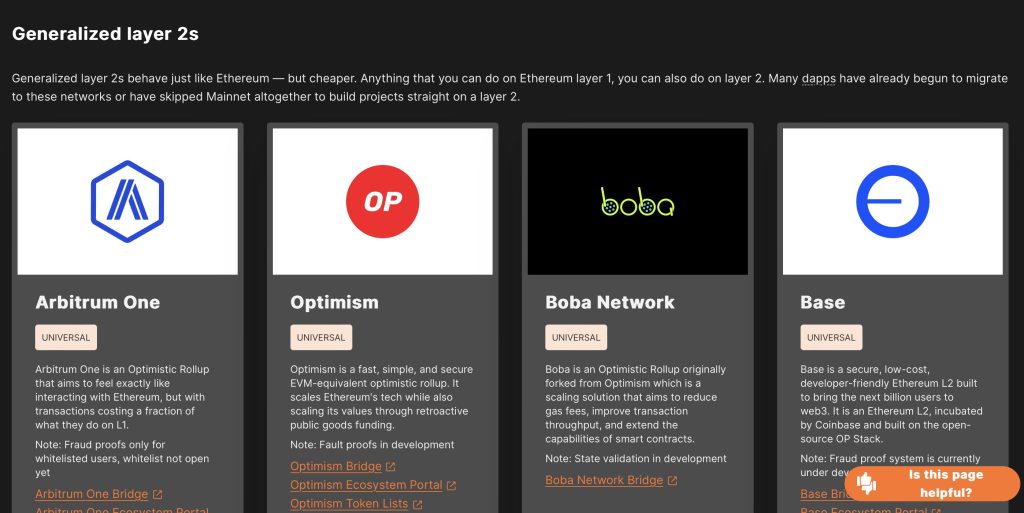Learn about Ethereum gas fees, their role in the Ethereum network, factors influencing their volatility, and strategies to minimize these costs for efficient transactions.
This article explores Ethereum gas fees – an essential part of any transaction on the Ethereum blockchain. Whether you’re transferring cryptocurrencies, trading Non-Fungible Tokens (NFTs), or using smart contracts, understanding Ethereum gas fees is crucial.
The fees can greatly fluctuate and are influenced by the type of blockchain used and the demand for block space. This guide will delve into the workings of these fees, their volatility, and strategies to reduce costs and optimize your transactions.
What are Ethereum Gas Fees?
Ethereum gas fees are the costs incurred for transactions on the Ethereum blockchain. They apply to all forms of transfers, such as exchanging cryptocurrencies or trading NFTs.
The fees fluctuate greatly, sometimes as low as USD 0.0001 and as high as over USD 100, influenced by the particular blockchain used and the demand for block space.

Ethereum gas, denoted in gwei (gigawei), is what users pay for transactions or smart contract use on the Ethereum network. One gwei is one billionth of an ETH, and these gas fees can only be paid in Ether (ETH), Ethereum’s native token.
These fees exist because running the Ethereum network requires resources in terms of computational power. Ethereum network participants can earn gas fees by voluntarily operating the blockchain, provided they stake their ETH, meaning they agree not to trade or sell it.
The amount of Ethereum gas fee is determined by three factors:
- The complexity of the transaction (the gas required for the transaction)
- The base fee (the minimum fee below which a transaction cannot be processed)
- The priority fee (an optional fee for quicker processing)
The total Ethereum gas fee is calculated by summing the base fee and the optional tip and then multiplying by the gas used.
How Ethereum Gas Fees Work
Ethereum’s gas fees function similarly to an auction, where the cost of transactions rises when demand increases. Additionally, transactions from individuals who provide larger tips and gas units are processed more quickly.
Consider an example where you wish to purchase ETH for your crypto wallet. Here’s a simplified explanation of how Ethereum gas fees operate:
| 1 | Transaction Initiation | You start a transaction to buy Ethereum (ETH) on a cryptocurrency platform. You enter how much ETH you want to buy and provide other necessary information. |
| 2 | Gas Fee Estimation Approval | The platform gives you an estimated Ethereum gas fee. This estimation is based on current Ethereum gas fees and network demand. It balances cost and transaction speed. |
| 3 | Transaction Submission to the Ethereum Blockchain | The buy order is sent to the Ethereum network. The data you send includes a maximum gas fee that you’re willing to pay. |
| 4 | Creation of a New Block by a Proof-of-Stake Validator | They choose which transactions to validate, usually preferring transactions with higher gas fees because they earn more from them. A transaction is finished when it’s in a block and the block is added to the blockchain. |
| 5 | Digital Wallet Balance Update | After your transaction is added to the blockchain, your Ethereum balance is updated and the gas fee is deducted. The total cost of the transaction is the amount of ETH you bought and the gas fee. |
| 6 | Validator Receives Gas Fees | The validator who processed your transaction gets the gas fees from all transactions in the block. To prevent ETH from inflating, the base fees are “burned”, or taken out of circulation. |
When are the Ethereum Gas Fees the Lowest?
Understanding the periods of low network transactions can help you significantly reduce gas fees. These periods vary from country to country due to differences in activity hours. By analyzing these activity hours, you can identify when gas fees are the lowest for your transactions.

The optimal time to conduct an ETH transaction is from 8 AM to 11 PM (EST) on Saturdays or Sundays, when gas prices are at their lowest. Conversely, Wednesday and Thursdays are the worst times for transactions due to high network activity and gas prices.
| Day | Lowest ETH Gas Time (EDT/EST) |
|---|---|
| Sunday | 4 AM to 11 PM |
| Monday | 5 AM to 5 PM |
| Tuesday | 11 AM to 3 PM |
| Wednesday | 12 AM to 3 PM |
| Thursday | 6 AM to 2 PM |
| Friday | 6 PM to 10 PM |
| Saturday | 8 AM to 11 PM |
By adjusting the timing of your transactions and opting for lower fees for non-urgent transactions, you can save on gas fees.
Considering the increasing price of Ethereum and its fees, it’s worth finding out how to save on gas. Identify the best times to buy Ethereum and plan your transactions accordingly. This strategy could potentially save you a significant amount of money.
Readmore: Fidelity Spot Ethereum ETF Proposed To Enable ETH Staking As Deadline Approaches
How to Reduce Gas Costs
Understanding the reason behind high gas fees can help you strategize to optimize your transactions. Primarily, there are three effective solutions to counteract the increasing Ethereum gas fees:
Strategic Planning
The initial step to lower your Ethereum gas fees involves scheduling your transactions so that they align with less congested network times. As stated before, the optimal time for transactions on the Ethereum network is midnight during the weekend.
Experimenting with a Layer 2 Solution

Similar to Bitcoin’s Lightning Network, Ethereum offers layer-2 solutions networks constructed on top of a blockchain designed to enhance capability, distribute workload, minimize congestion, and prevent single points of failure to help you achieve the lowest ETH gas fees.
In Ethereum’s case, these are known as Rollups. If you’re interested in these types of solutions, you might consider Arbitrum, Optimism, Polygon, or Loopring.
Utilizing Tools for Gas Fee Estimation
One of the complexities of gas fees is the uncertainty of the actual gas fee until the transaction is executed. Typically, people might overlook it and deal with the gas fees afterward.
To get an estimation of the gas fees before proceeding with your transaction, applications can provide a rough idea of the potential gas fees.
Applications like DeFi Saver can simulate your transaction and display real-time gas fees. This pre-transaction simulation can offer a clearer picture of your potential expenses.
Readmore: Grayscale Ethereum ETF Is Now Being Revised 19b-4 Filing To The SEC
What Caused the First Major Spike in Gas Prices?
The initial major surge in gas prices can be attributed to the introduction and popularity of Ethereum’s Smart Contracts.
These allowed developers to create decentralized applications, known as “dApps”. With the increase in dApps on the blockchain, the network experienced congestion, resulting in a rise in gas prices.
NFT Inflation Caused Another Surge in Gas Prices
A Non-Fungible Token (NFT) is a unique digital asset recorded on a blockchain, with exclusive ownership granted to a single individual. These tokens can encapsulate various digital assets, from digital art and social media posts to other forms of online content.
The creation of an NFT involves minting it on the blockchain, for which a fee is charged. There are dedicated NFT platforms that offer instructions on minting, purchasing, and selling these tokens.
In 2017, the Ethereum network experienced severe congestion due to the surge in usage of the famous dApp, CryptoKitties. This resulted in a rise in gas fees from 0.002 ETH to 0.008 ETH and a slowdown of the Ethereum platform as transaction volumes hit an all-time high.
Today, the surge in NFT popularity has led to a dramatic increase in gas prices, leading investors to explore methods to cut down on these costs.
Readmore: Ethereum Layer 2 TEN Surges to $30M Valuation in Latest Funding!
Gas Wars Role in Ethereum Gas Fees
Gas wars, when demand for a cryptocurrency exceeds supply, significantly impact Ethereum transaction fees. Users bid competitively, raising ‘gas fees’, to speed up their transactions.
Such situations often occur during high-demand periods like initial DEX offerings (IDOs) or non-fungible token (NFT) minting. Participants pay higher-than-average gas fees to secure a spot in the next block, causing fees to skyrocket.
However, this competition can price out smaller participants and attract frontrunners exploiting high gas fees for quick profits. Despite challenges, gas wars remain a crucial part of the Ethereum network, driving participation and price fluctuations.
Why are Ethereum gas prices so volatile?
Ethereum gas fees experience volatility due to fluctuations in network usage. When many users want to conduct transactions on the Ethereum blockchain, it can result in network congestion. To expedite their transactions, users may offer higher tips, which in turn increases gas prices.
Conversely, when network usage is low, validators are more likely to accept smaller tips, leading to a decrease in gas prices. The continuous change in network usage and congestion directly impacts the volatility of Ethereum gas fees, making it primarily a matter of supply and demand.
Conclusion: The Importance and Impact of Ethereum Gas Fees
In conclusion, Ethereum gas fees play a crucial role in the functioning of the Ethereum network, acting as a reward mechanism for the validators and controlling the volume of transactions on the network.
These fees can significantly fluctuate based on network usage, leading to periods of high and low costs. Understanding these periods, along with strategic planning and use of tools for gas fee estimation, can help users optimize their transactions and save on costs.
Despite the volatility and complexity, Ethereum’s gas fee system is an integral part of its blockchain technology. It ensures the sustainability of the network by compensating validators and prioritizing transactions.
However, the system may pose challenges for smaller participants or those new to the Ethereum network due to its complexity and the potential for sudden cost increases.
Thus, users must stay informed about Ethereum gas fees and utilize strategies to manage and optimize their transactions effectively.
Frequently Asked Questions
1. What are Gas Fees Used for?
Gas fees are used to process transactions on the Ethereum blockchain. These fees apply to all kinds of transfers, including cryptocurrency exchanges and NFT trading. They compensate network participants who voluntarily operate the blockchain by providing computational power.
These fees fluctuate based on the complexity of the transaction, the base fee, and the optional priority fee for quicker processing. All gas fees are paid in Ether (ETH), Ethereum’s native token.
2. Who Gets the Gas Fees?
The gas fees paid for transactions on the Ethereum network go to the validators who process the transactions. Validators voluntarily operate the blockchain and in return, earn gas fees.
However, to become a validator, they must stake their Ether (ETH), meaning they agree not to trade or sell it for a certain period.
3. What is the Ethereum Gas Limit?
The gas limit is the maximum gas you’re willing to use for a transaction. More complex transactions, such as those involving smart contracts, need more gas than simple payments. For instance, a standard ETH transfer requires a gas limit of 21,000 units.
If you set a gas limit of 50,000 for a simple ETH transfer, 21,000 will be consumed, and the remaining 29,000 returned. However, setting a lower limit, like 20,000, will lead to an incomplete transaction, with the consumed gas not refunded.
4. Why are ETH gas fees so high?
High gas fees are due to the popularity of Ethereum. If there’s too much demand, users must offer higher tip amounts to try and outbid other users’ transactions.
A higher tip can make it more likely that your transaction will get into the next block. Also, more complex smart contract apps might be doing lots of operations to support their functions, making them consume a lot of gas.
5. How can I avoid high ETH gas fees?
There are several strategies to reduce your Ethereum gas fees:
- Timing: Schedule your transactions for times when network usage is low. Typically, these periods are midnight during the weekends.
- Layer 2 Solutions: Consider using Ethereum’s layer-2 solutions, such as Rollups, to decrease congestion and gas fees. Rollups are second-layer networks built on top of the Ethereum blockchain, designed to increase its capacity. Examples include Arbitrum, Optimism, Polygon, and Loopring.
- Gas Fee Estimation Tools: Use tools that provide estimations of your transaction’s gas fees before execution. For example, DeFi Saver can simulate your transaction and give you a real-time estimate of your gas fees.
6. What time of day are ETH gas fees lowest?
The optimal time to conduct an ETH transaction, when gas prices are at their lowest, is from 8 AM to 11 PM (EST) on Saturdays or Sundays. During the weekdays, the gas fees are typically higher due to increased network activity.
| DISCLAIMER: The information on this website is provided as general market commentary and does not constitute investment advice. We encourage you to do your own research before investing. |























